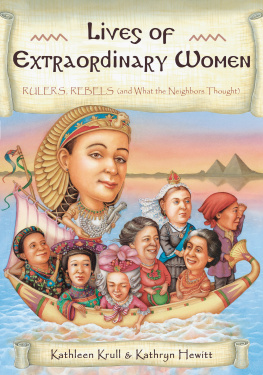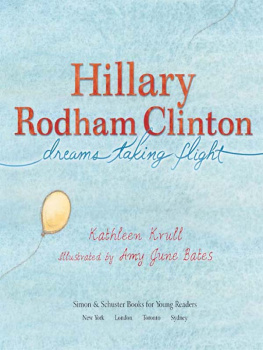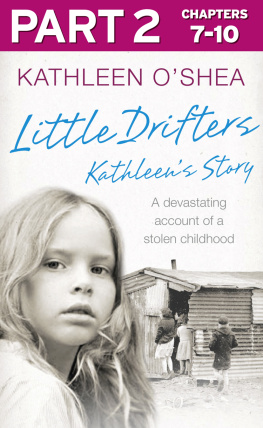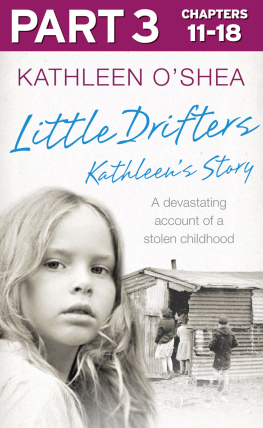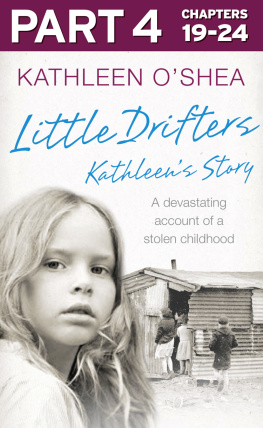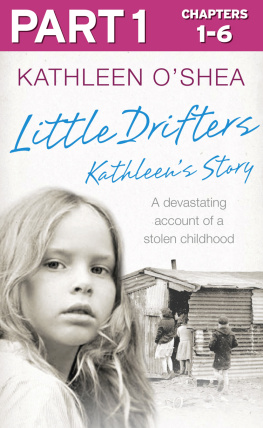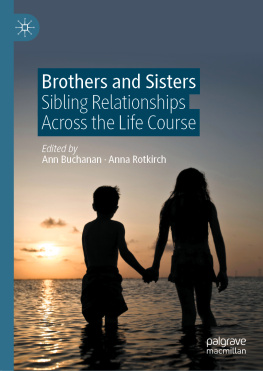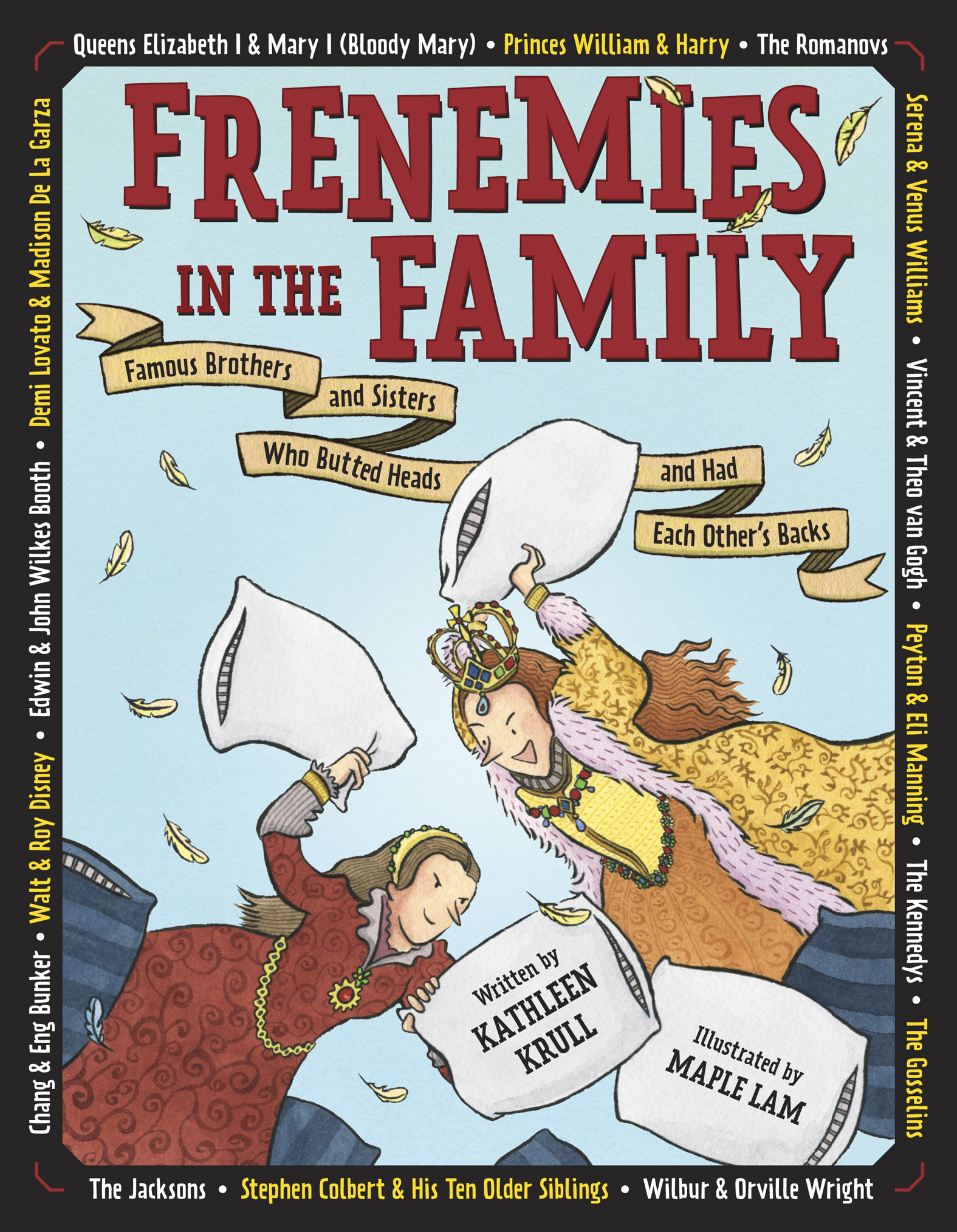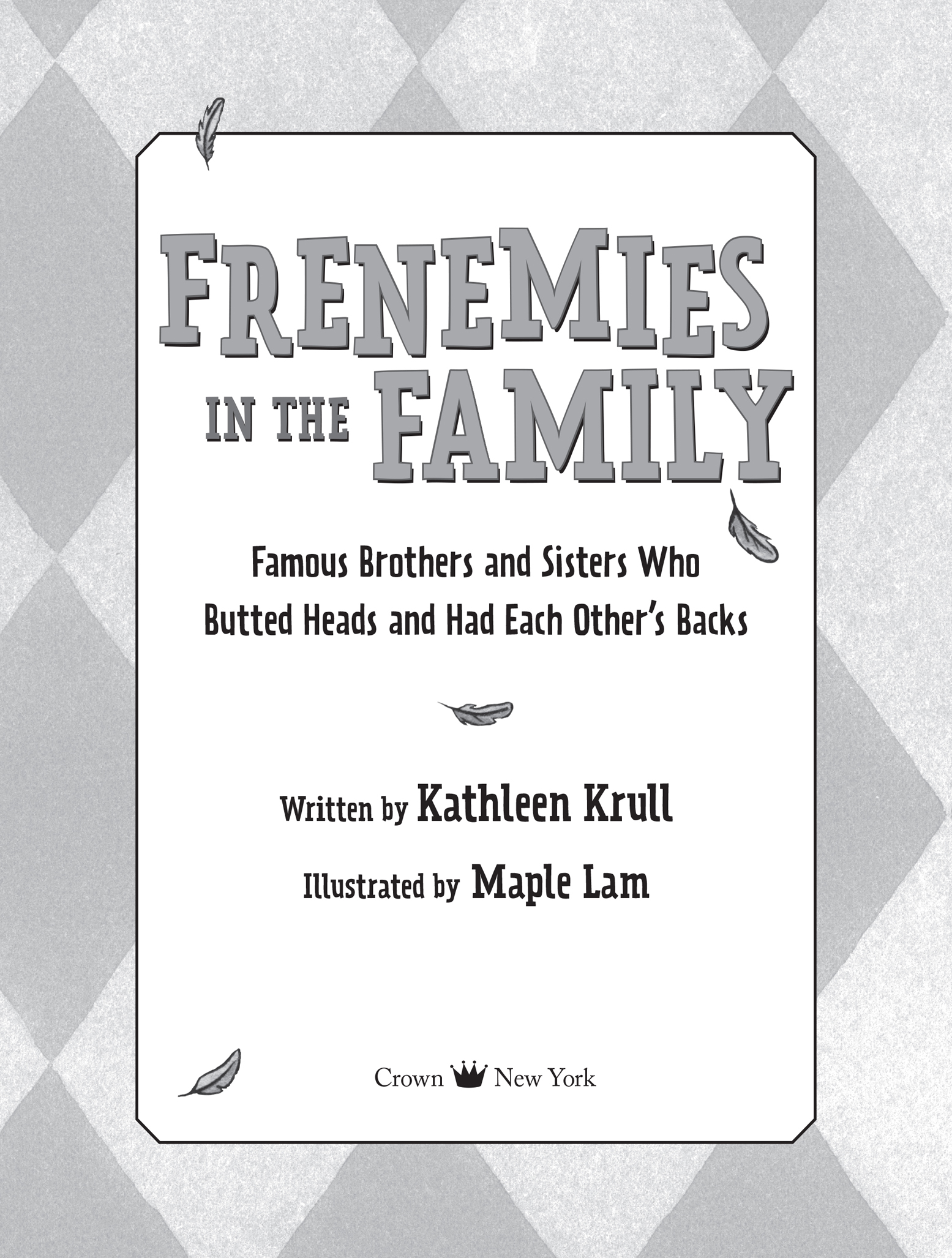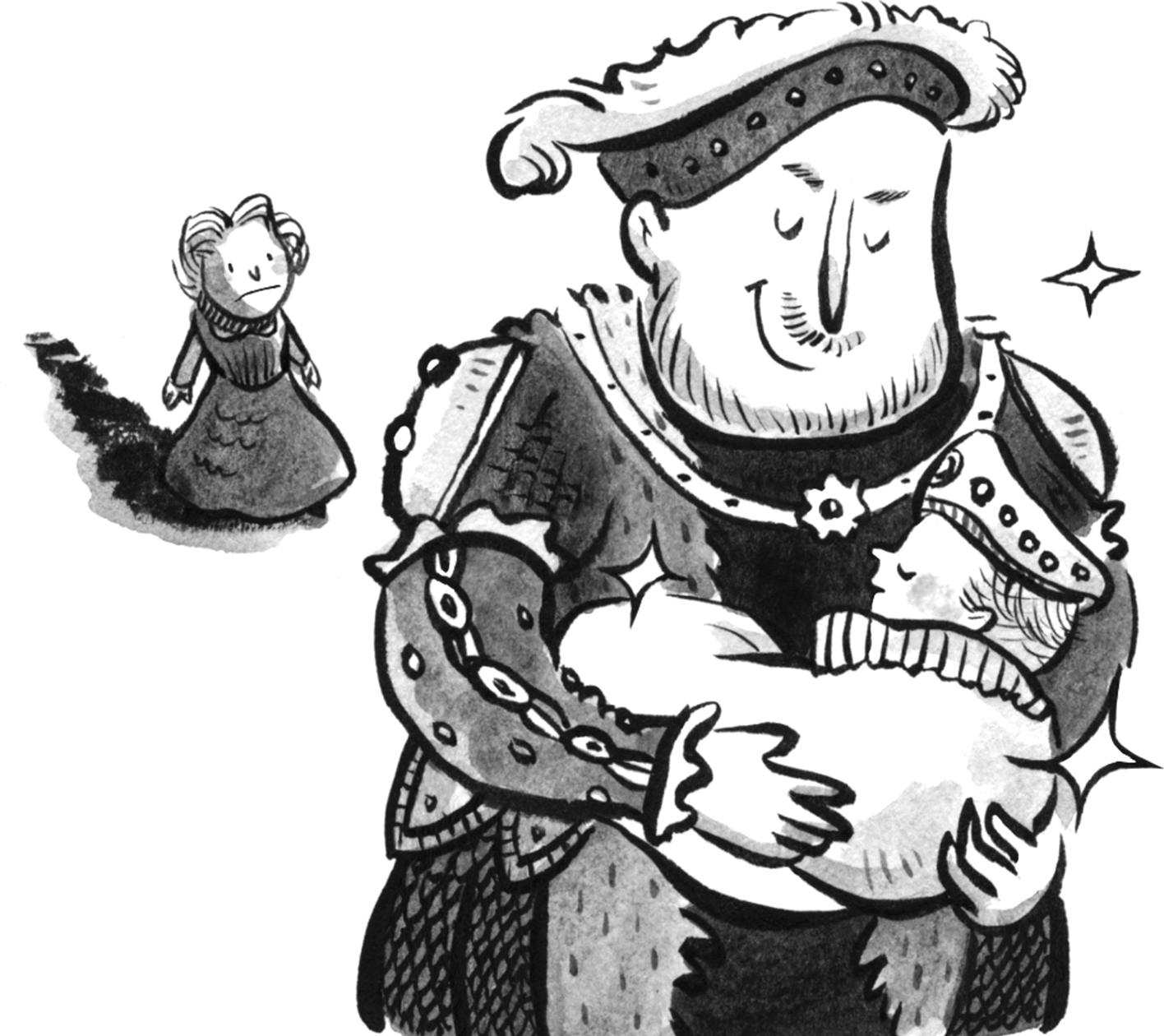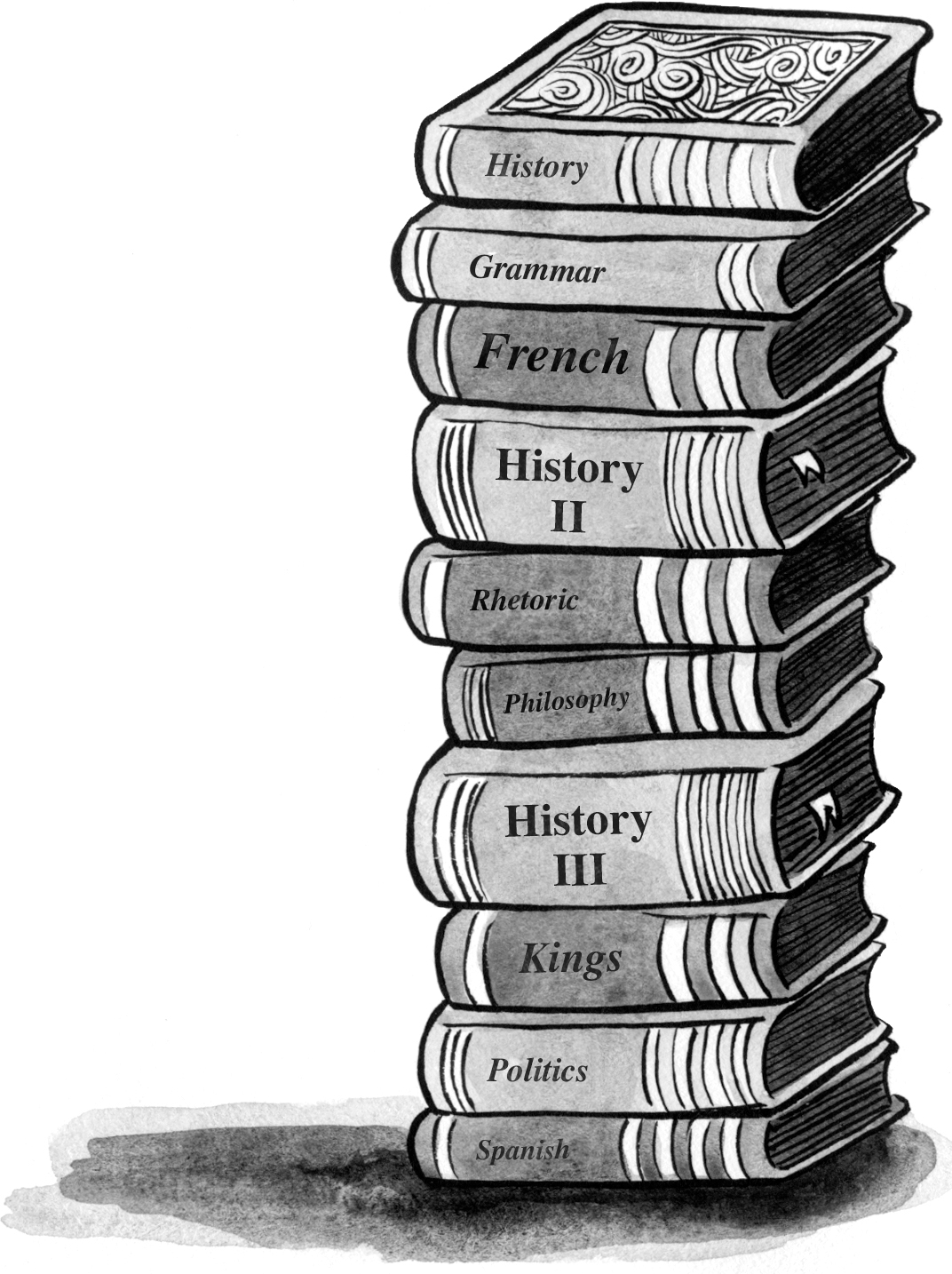All rights reserved. Published in the United States by Crown Books for Young Readers, an imprint of Random House Childrens Books, a division of Penguin Random House LLC, New York.
Crown and the colophon are registered trademarks of Penguin Random House LLC.
Educators and librarians, for a variety of teaching tools, visit us at RHTeachersLibrarians.com
Names: Krull, Kathleen, author. | Lam, Maple, illustrator.
Title: Frenemies in the family : famous brothers and sisters who butted heads and had each others backs / Kathleen Krull ; illustrated by Maple Lam.
Other titles: Famous brothers and sisters who butted heads and had each others backs
Description: First edition. | New York : Crown Books for Young Readers, [2018] | Audience: Grades 46. | Audience: Ages 812.
Identifiers: LCCN 2017038405 | ISBN 978-0-399-55124-6 (hardcover) | ISBN 978-0-399-55126-0 (epub) | ISBN 978-0-399-55125-3 (glb)
Subjects: LCSH: Brothers and sistersCase studiesJuvenile literature. | Sibling rivalryJuvenile literature. | Brothers and sistersUnited StatesBiographyJuvenile literature.
Random House Childrens Books supports the First Amendment and celebrates the right to read.
Introduction
Siblings! You cant live with them; you cant launch them into space.
Revelry, rivalry, a rumpus of emotions, whipped into a froth of teeth gnashing and hair tearing.
Unless youre an only child (oh, boo-hoo), who doesnt have a juicy sibling story?
Even famous people doread on. In chronological order, meet siblings who were BFFs, deeply attached, or even literally attached.
And meet others who were candidates for the Bad Sibling Hall of Fame, in cutthroat competition, or even homicidal.
Sometimes siblings band together against cruel parentsor against the cruel world. More often, though, they butt heads. Oh, brother! Oh, sister!
So, next time you:
get blamed for something your sibling did,
have hand-to-hand combat about who sits in the front seat of the car,
find rude comments scribbled by a sibling in your private diary,
have to share a room with a sibling with personal habits the opposite of yours,
lose the race to get to the shower first in the morning,
have to listen to a siblings wretched taste in music,
reach for the last cupcake and its gone,
or any of a million other sibling devilries
instead of screaming, savor these stories and try to look forward to celebrating National Siblings Day next April 10.
The British king Henry VIII doted on his daughter Maryat first. This girl never cries! he boasted.
In 1520, at four years old, Princess Mary was entertaining foreign visitors with her performances on the harpsichord. By nine, she could read and write Latin. Her mother, Catherine of Aragon, oversaw her education, and Henry approved, calling Mary his pearl of the world and token of hopeeven though, like pretty much every king, what he really wanted was a son.
Poor Mary!
Her dad was without question one of the worlds worst husbands, with six wives in all. Henry VIII left the Catholic faith (and forced all his subjects to join him) so that he could divorce Catherine on shaky grounds (mainly that lack-of-a-son thing) and banish her from court. It was a terrible blow to seventeen-year-old Mary, who never saw her mother again.
Even worse, Henrys next wife, Anne Boleyn, had a daughter, Elizabeth, who instantly became the Favored One. Anne stripped Mary of her princess title and forced her to act as lady-in-waiting to the new princess, her baby half sister.
The indignities piled up. Mary actually had to walk behind the babysometimes it took slaps to enforce this. Elizabeth got the place of honor at the table (Mary ate in her rooms). The baby was dressed in gold-embroidered caps, gowns of green satin or orange velvet. No expense was spared for her, while Mary had to give up servants and return some of her jewels. When Mary protested, Henry dispatched his most important dukewho threatened to crack her skull against the wall.
Perhaps Mary never cried as a baby, but now that was all she did, presumably out of her dads hearing.
Poor Elizabeth!
Before she reached her third birthday, Henry had Anne beheaded (yes, one of the reasons: Elizabeth wasnt a son). Elizabeth is known to have mentioned Anne only twice afterward but all her life treasured a ring with two miniature portraits of her and her mom.
Poor sisters!
After Henrys next marriage, the sisters had a half brother, Edward, the new Favored One. His mother, Jane Seymour, died two weeks after his birth (before Henry thought of a reason to dispose of her). The two girls were pushed aside while Edward was groomed to be the next ruler.
By age six, Elizabeth was noted for her unsmiling face; people said that she looked as serious as a forty-year-old. Her dads main interest was her moral development, and his theory of child rearing involved surrounding her with ancient and sad persons.
She was rescued by a stepmom, the kings sixth and final wife. Unusually well educated for her day, Catherine Parr made a point of seeing that the obviously promising Elizabeth got the same rigorous education given to male heirslanguages, history, rhetoric, and philosophy. Usually, education for women was sketchy, as you can tell from her tutors compliments: Her mind has no womanly weakness, he wrote; her perseverance is equal to that of a man, and her memory long keeps what it quickly picks up.
Elizabeth ended up much better educated than Mary, who was understandably bitter and insecure. Her father was too busy with his own marriages to arrange one for Mary. At twenty-five, she had no real roleshe was just Lady Mary, and the most unhappy lady in Christendom.
Elizabeth was thirteen when Henry died. She grieved briefly but immediately regained her famous composure. Mostly he had scared her.
Since women had no power of their own, even nine-year-old Edward was seen as the better choice to rule than his older sisters. When he became king, the men around him began jockeying to be the power behind the throne. Mary and Elizabeth were pawns, tense rivals at a time when everyone around them was plotting for their own gain. People watched closely to see which sister was in favor, and the sisters simply avoided each other during his reign.




